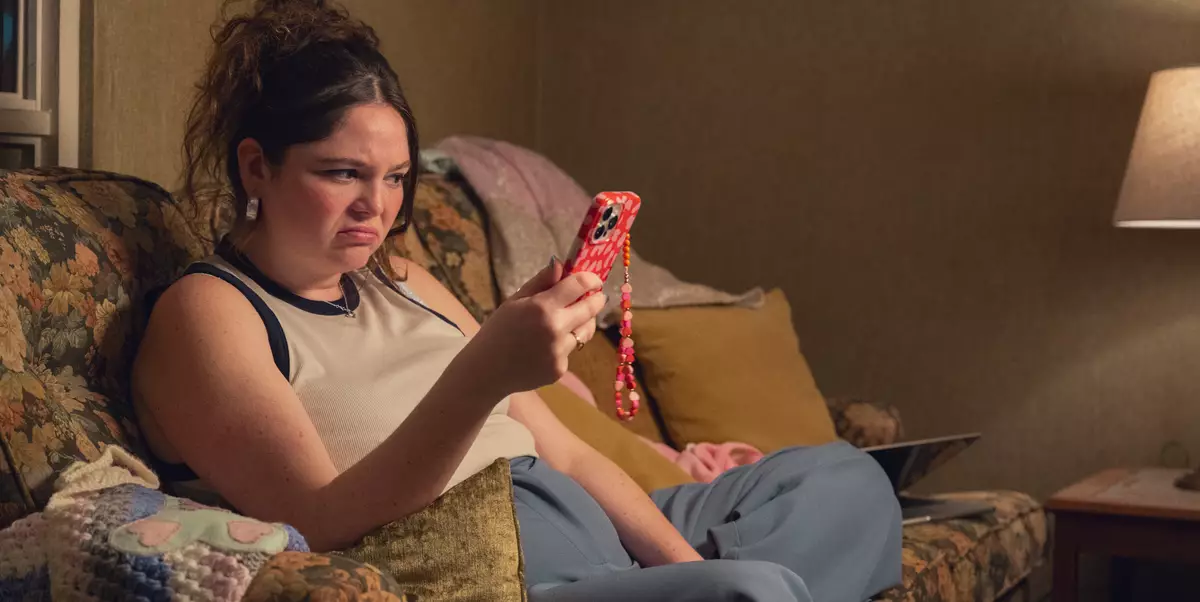The recent finale of Netflix’s “Too Much” signals a radical shift in how romantic stories are told on screen. Traditionally, romantic comedies culminate in the “meet-cute” and eventually a happy ending—often a happily-ever-after that seems to solve all problems in one neat package. However, the creators of “Too Much” suggest a different approach: moving beyond the initial spark of attraction to explore the messy, nuanced reality of sustaining love. This signals a refreshing rejection of superficial narratives, emphasizing that marriage is not an endpoint, but rather a complex process filled with negotiations, compromise, and growth.
The decision to pivot from “meet cute” to real marriage is bold. It challenges viewers’ expectations and encourages a more authentic portrayal of relationships. Love, in this view, is not a fairy tale but a continuous journey that demands patience, understanding, and sometimes even failure. This approach not only makes the characters more relatable but also offers a richer narrative landscape, one that embraces vulnerability and the unpredictability of long-term commitment.
The Risk and Reward of Narrative Authenticity
Lena Dunham, the creative force behind “Too Much,” openly advocates for portraying relationships as intricate negotiations rather than idyllic fantasies. Her hope that the series will move into “marriage stories” suggests an intention to dig deeper into the characters’ emotional lives. Yet, this ambition is fraught with challenges, especially considering the industry’s preference for quick resolutions and formulaic storytelling. Netflix’s hesitation in confirming a second season reflects the inherent risk: will audiences embrace the raw, often uncomfortable realities of married life, or will they prefer safer, more predictable plots?
Dunham recognizes that the path forward is uncertain. She hints at the difficulties of controlling a show’s narrative once it’s in the hands of studios and streaming platforms. This acknowledgment underscores a larger truth about television: creative vision often contends with commercial considerations. Yet, her optimism and cast’s enthusiasm signal that there’s genuine hope for “Too Much” to continue pushing boundaries—assuming enough viewers resonate with this honest exploration of love’s complexities.
Creating a New Paradigm for Romantic Comedy
Most romantic comedies tend to treat marriage as a reward for love’s triumph—an ideal culmination that signals stability and happiness. “Too Much” plays with that notion by suggesting marriage is just the beginning. The series aims to show that real love is imperfect, fraught with disagreements, misunderstandings, and moments of vulnerability that don’t always fit the romantic ideal. This philosophy could radically reshape the romantic comedy genre, making it more relevant and meaningful for modern audiences.
By focusing on characters who are still “bumbling toward self-awareness,” Dunham strives to create a narrative where love is an ongoing discovery—not a destination. This approach not only offers viewers a more honest portrayal of relationships but also positions the show as a potential catalyst for broader conversations about commitment, change, and personal growth. If Netflix greenlights a second season, it could set a precedent for television to move away from sanitized, predictable stories and embrace love’s messiness as something beautiful and necessary.
Ensemble and Talent Coalesce for Future Storytelling
The enthusiasm from the cast, including Megan Stalter and Will Sharpe, indicates a strong desire to continue exploring these characters. Their willingness to delve into the difficulties and joys of long-term relationships can sustain the show’s thematic depth. Additionally, potential casting additions like Emily Ratajkowski, Naomi Watts, and Richard E. Grant hint at expanding the universe’s richness and complexity.
Yet, it’s not just the cast that signals commitment—it’s the potential for nuanced storytelling. “Too Much” has an opportunity to challenge stereotypes, elevate underrepresented voices, and portray the messiness of modern love in all its forms. The series could harness a diverse set of perspectives that reflect contemporary relationships, adding layers of social commentary and authenticity that resonate deeply with viewers.
The Significance of Ownership in Relationship Storytelling
Dunham’s reflection on what a second season could entail reveals her desire to make the narrative less about the fairy-tale ending and more about the ongoing negotiation of partnership. This perspective underscores a deeper cultural shift—toward valuing vulnerability and emotional authenticity over idealized versions of love. It invites viewers to reconsider their expectations and embrace love as a continuous process, complete with setbacks and revelations.
The potential for “Too Much” to evolve into a series that portrays marriage as an evolving art form is both exciting and necessary. In a media landscape often obsessed with instant gratification and shallow resolutions, Dunham’s vision stands out as a courageous step toward depicting the real human experience—messy, unpredictable, and ultimately worth fighting for. If executed well, “Too Much” could redefine what romantic comedy means in the 21st century, transforming it from escapism into a mirror held up to the complexities of life and love.

